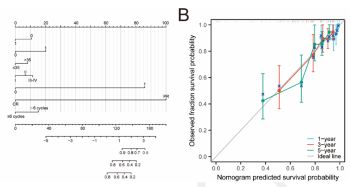Clinicopathological factors of ovarian clear cell carcinoma: A single institutional analysis of 247 cases in China
DOI:
https://doi.org/10.17305/bb.2024.10958Keywords:
Ovarian clear cell carcinoma, recurrence, clinicopathological features, nomogram, immunotherapyAbstract
Ovarian clear cell carcinoma (OCCC) is a subtype of ovarian cancer with a poor prognosis that often shows resistance to chemotherapy. This study retrospectively analyzed 247 patients with OCCC who were admitted to the Cancer Hospital of the Chinese Academy of Medical Sciences (CAMS) between August 2007 and August 2023. Univariate and multivariate Cox regression analyses were used to identify clinicopathological factors associated with OCCC, and a nomogram prediction model was developed to predict OCCC patient survival outcomes. Kaplan‒Meier survival analysis was used to compare survival outcomes among patients with recurrent disease. Compared with systemic therapy, secondary debulking surgery significantly improved the postrecurrence survival (PRS) rate (P = 0.006). Subgroup analysis revealed that the survival benefit was more pronounced in patients with recurrence and satisfactory tumor shrinkage (PPRS = 0.01, PPFS2 = 0.047). The multivariate analysis revealed that positive preoperative ascites, incomplete remission following initial treatment, and undergoing more than six cycles of postoperative chemotherapy were independent prognostic factors affecting overall survival (OS). Additionally, patients with a positive PD-L1 test who received immunotherapy did not experience relapse during the follow-up period. In conclusion, the secondary clearance procedure offers significant benefits for patients with recurrent OCCC, and patients may experience a survival benefit from supplemental immune or targeted therapy at the end of chemotherapy. The development of a personalized treatment plan can help achieve precise treatment, improve prognosis, and enhance patients' quality of life.
Citations
Downloads

Downloads
Additional Files
Published
Issue
Section
Categories
License
Copyright (c) 2024 You Wu, Xueyan Lyu, He Zhang, Miao Ao, Haixia Luo, Yanjia Chen, Yan Song, Bin Li

This work is licensed under a Creative Commons Attribution 4.0 International License.









